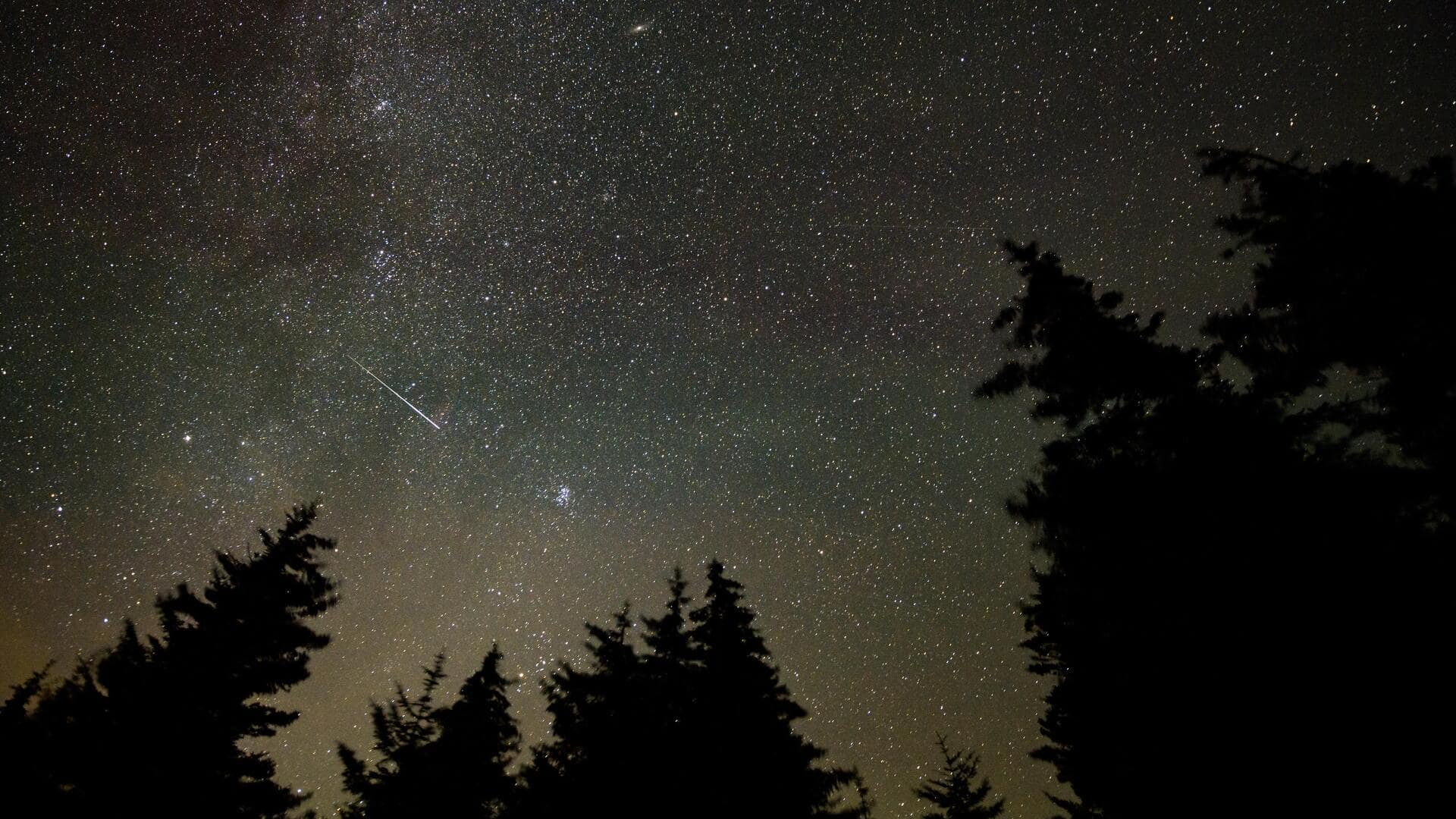
How to see Perseid meteor shower in 2023
What's the story
Stargazers are in for an absolute treat starting this month. The Perseid meteor shower, known to be one of the best meteor showers seen each year, has just started. It peaks around August 12-13, per BBC, and will remain visible until August 24. This year the Moon will not interfere with your viewing, making it the best time to watch the spectacular shooting stars.
Cause
Why do we see the Perseid meteor shower?
The Perseid meteor shower, like most other meteor showers, occurs when Earth's orbit crosses the trail of dust left by a comet. The comet responsible for the Perseids is 109P/Swift-Tuttle. When the Earth crosses the thickest part of the comet's dust trail, we get to see the most shooting stars, which contributes to the peak of the meteor shower.
Details
The Perseid meteor shower is associated with fireballs
Perseid meteors are known to leave "wakes" of light and color behind as they shoot through the Earth's atmosphere. Interestingly, this meteor shower is associated with fireballs. "Fireballs are larger explosions of light and color that can persist longer than an average meteor streak," per NASA. These fireballs form from larger chunks of cometary debris. If lucky, we may see fireballs this year.
Details
What is the best time to watch the meteor shower?
Perseids are among the most active meteor showers. They are fast-moving with an average speed of 59km/s. The Perseid meteor shower began on Monday but the nights of August 12 and 13 will be the best time to view it. At the peak, as many as 100 shooting stars can be seen. Following the peak days, the number of meteors could reduce.
Location
The meteor shower gets its name from the constellation Perseus
The point in the sky from where the Perseids appear to originate is the northern part of the constellation Perseus. Hence, the meteor shower gets its name from the constellation Perseus. However, this constellation is not the source of the Perseid meteors. The constellation simply serves as a reference point for viewing the shooting stars.
Viewing tips
How to watch the Perseid meteor shower?
First, locate a place away from bright lights. Position yourself comfortably and allow about 30 minutes for your eyes to adjust to the night light. Keep your cameras handy to take a few clicks. You can also download astronomy apps to track the best location for viewing the meteor shower. You do not require a telescope or binoculars for viewing.
Information
Look out for these planets on August 12 and 13
On August 12 and 13, you will also get to see Saturn and Jupiter. Right after sunset, Saturn will be visible in the evening sky and Jupiter will soon follow. You can use celestial apps to track the positions of the cosmic bodies.
Meteor showers
Some minor meteor showers peak this month
In the meantime, you can look out for these five, lesser-known meteor showers. Some of them start peaking from the end of this month leading up to the next, between July 26 and August 17. The list includes: Capricornids (July 26), Delta Aquarids (July 29), Piscis Austrinids (July 31), Alpha Capricornids (August 2), Iota Aquarids (August 6), and Kappa Cygnids (August 17).